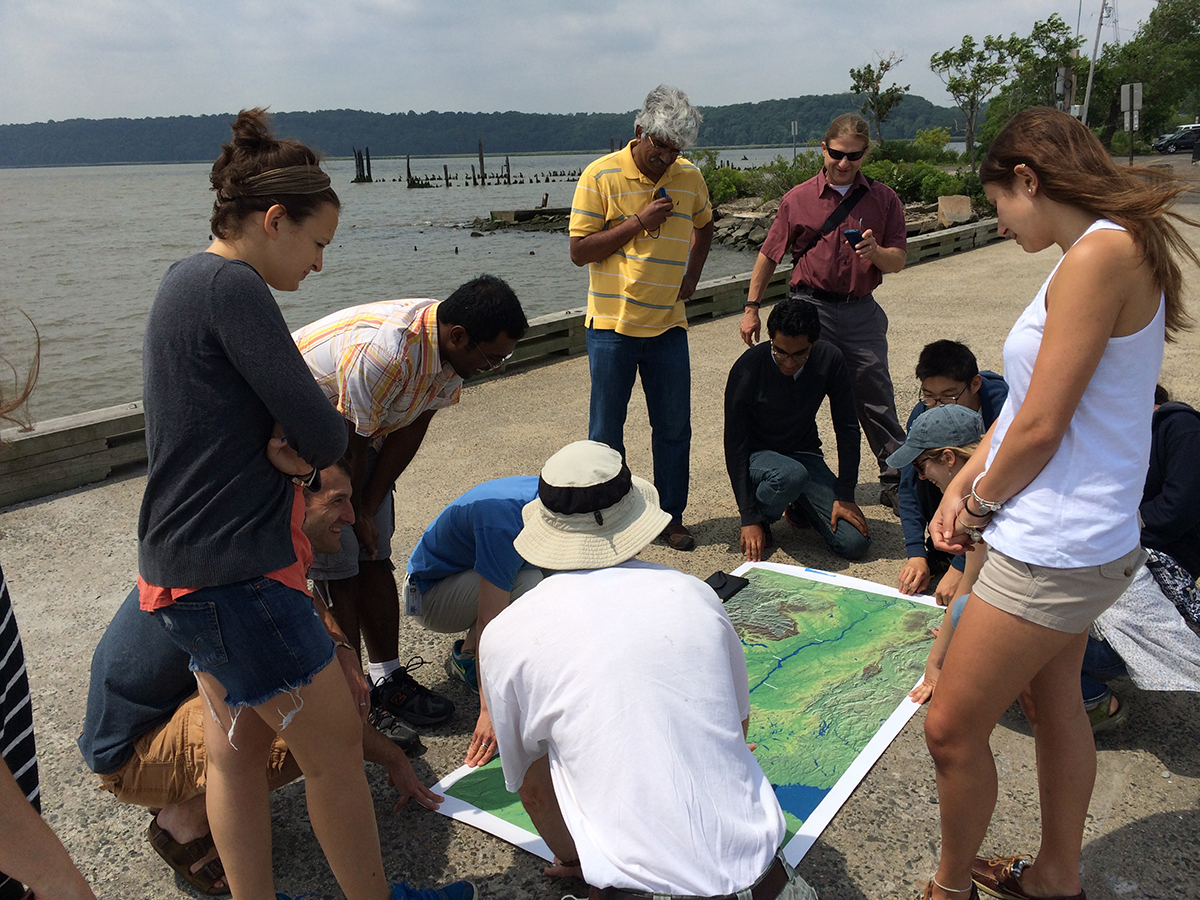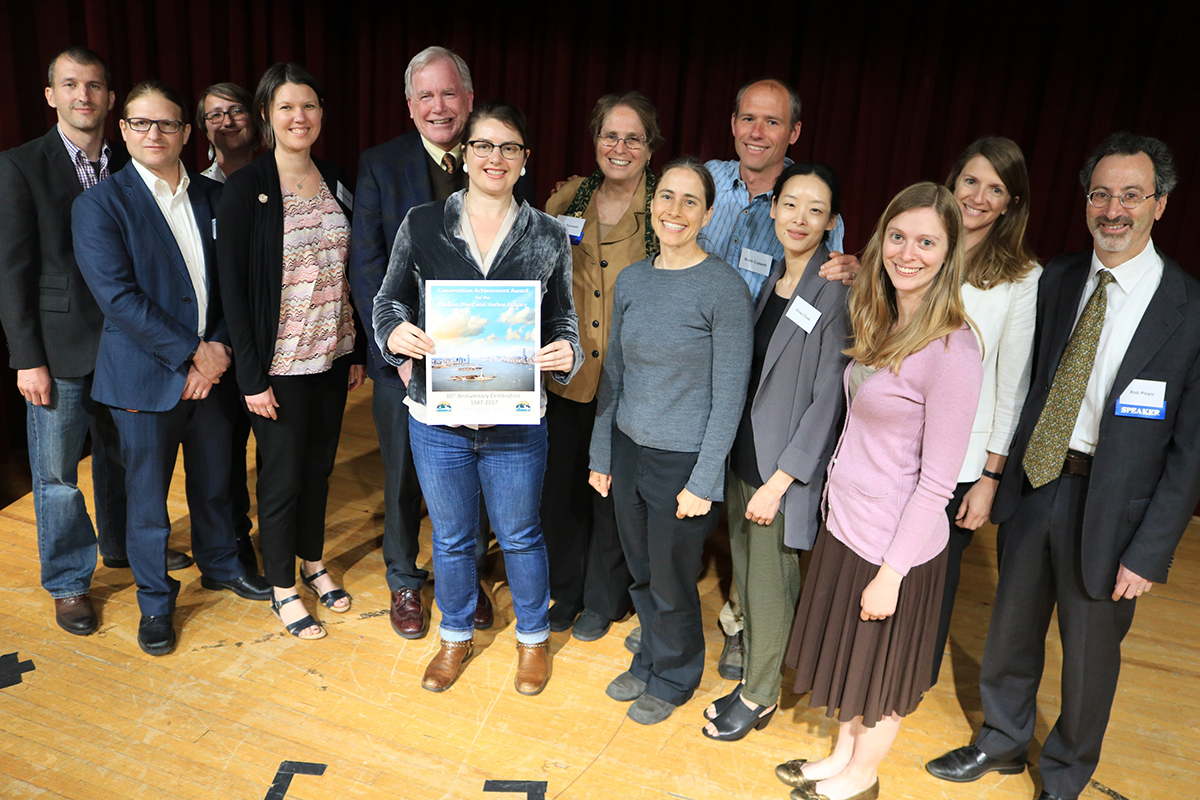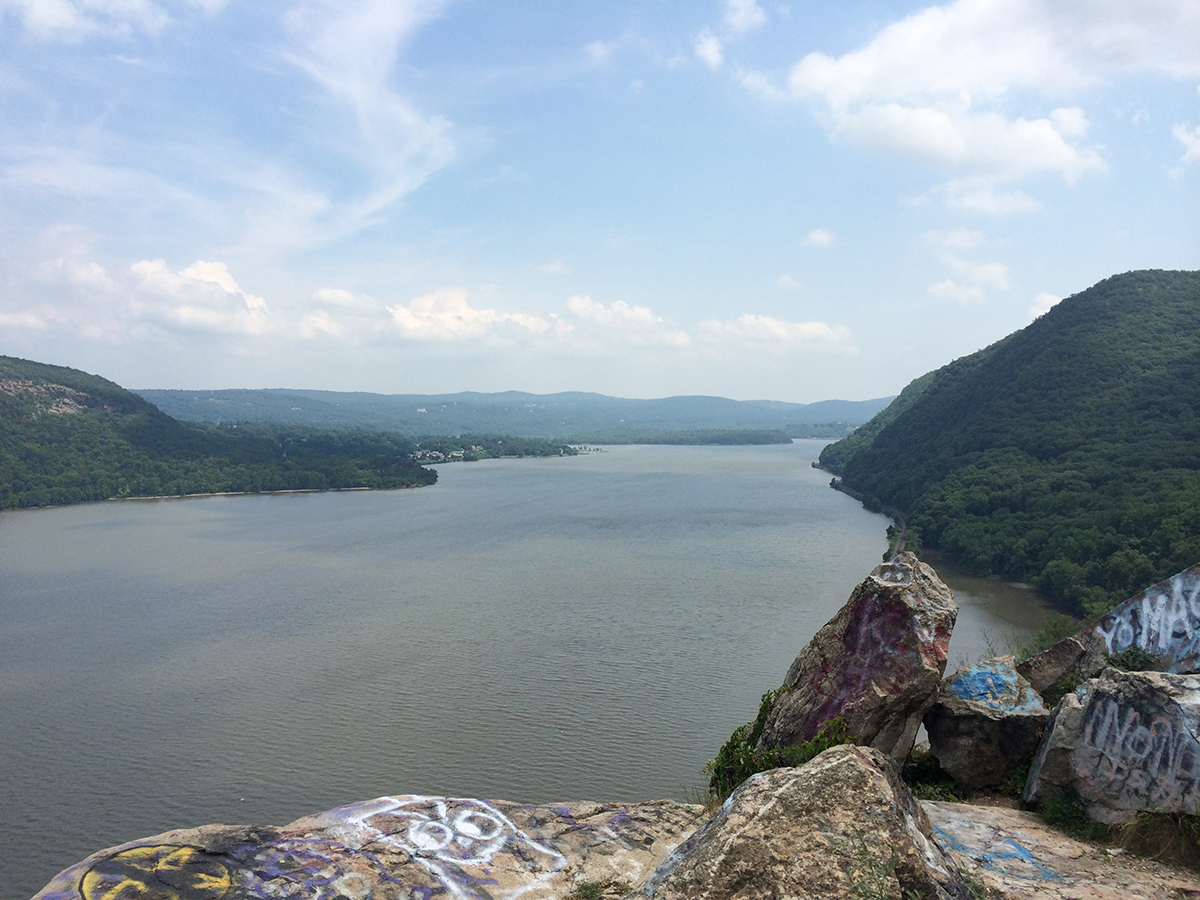Cornell’s Hudson River conservation work nets DEC award
The Hudson River has been a critical part of New York’s infrastructure since before the country’s founding, linking New York City with Albany, the Erie Canal and beyond.
The corridor is also environmentally rich: The watershed that feeds the Hudson comprises only 13.5 percent of New York state’s land area but contains 85 percent of the state’s bird, mammal, reptile and amphibian species.
Development pressure along the corridor, combined with the environmental value of the watershed, means “the potential for conflict is high,” said Karen Strong, conservation and land use program coordinator for Cornell’s Hudson River Estuary and Watershed Program in the Department of Natural Resources.
For more than 20 years, Cornell has facilitated collaborative solutions to protect and preserve the Hudson River Estuary and its watershed, and on May 23, the university and the College of Agriculture and Life Sciences (CALS) were recognized by the New York State Department of Environmental Conservation’s (DEC) Hudson River Estuary Program for their efforts. The DEC’s estuary program, now in its 30th year, recognized its many partners at a conference in New York City. Cornell was honored for its long-term partnership and vital role in the success of the DEC program.
“The Hudson River is an ecological marvel here in our state, and I am proud of the conservation science and outreach Cornell has done to protect it,” said Kathryn J. Boor ’80, the Ronald P. Lynch Dean of CALS. “While this award recognizes the crucial impact we have had so far, there remains much to be done to safeguard the Hudson River and its many communities. We are committed to applying our research and expertise to sustain this stunning natural resource for future generations of New Yorkers.”

Cornell’s approach to conservation in the Hudson watershed has been to work with communities on their own terms and at their own pace.
“You need to engage your community slowly and engage people personally so they can come to understand for themselves and make their own decisions,” Strong said. “You’re helping people understand, not telling them what to do. It’s really fortunate that we’ve been able to do this for so long because this kind of work can take a long time.”
The approach has paid off in myriad ways. Of the 260 municipalities in the Hudson’s watershed, roughly half have partnered with Cornell, in anything from two-hour trainings on how to understand a site’s ecological value during a planning review, to yearslong relationships that have created new zoning laws and conservation advisory councils, and conserved tens of thousands of acres.
Cornell is also working with communities along the Hudson to address issues of sea-level rise and flooding, which are projected to increase with climate change. The Climate-Adaptive Design studio, a program led by assistant professor Josh Cerra in the Department of Landscape Architecture, links Cornell students with flood-risk Hudson Riverfront communities to explore design alternatives for more climate resilient and connected waterfront areas as they respond to climate change.
The New York State Water Resources Institute (WRI) at Cornell has been a leader for improving water management in the Hudson. The institute has beta-tested multiple conservation programs and procedures in the Hudson, which have been adopted statewide and beyond, said Todd Walter, WRI director and professor in the Department of Biological and Environmental Engineering.
The “Trees for Tribs” program partners local volunteer organizations with state resources: New York state nurseries provide native trees, and volunteers plant them in tributaries, where they will help prevent erosion and flooding, and improve habitat for wildlife.

WRI also helps the state and municipalities to redesign culverts and stream crossings. Narrow stream crossings are initially cheaper to install, but they cause long-term problems with downstream erosion and flooding, and they make it harder for aquatic creatures like herring and American eel to navigate. WRI provides data modeling showing which culverts are at greatest risk for flooding, and with data in hand, the state and municipalities are better armed to apply for funding to re-engineer the crossings, to the benefit of people, habitat and wildlife.
“Frequently, the work we do gets faculty, students and the community all working together,” Walter said. “Communities, often through Cooperative Extension, identify the problems, and then faculty and students work together to diagnose what’s causing those problems and eventually suggest solutions.”
Frances Dunwell, Hudson River Estuary program coordinator at the DEC, said Cornell and CALS have been “vital partners for more than 20 years.”
“Their work engaging stakeholders has inspired students, municipal leaders, community groups and others to develop locally led strategies and solutions to natural resource challenges,” Dunwell said. “The progress we celebrate on the 30th anniversary of our program would simply not have been possible without this crucial partnership. I am personally so grateful to Cornell and its amazing staff and students for the creative collaboration we enjoy.”
This article is written by Kris Gassier and was originally published in the Cornell Chronicle on May 25, 2017.

